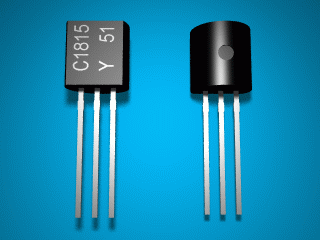I'm trying to fix this little electronic toy. It's really not much, 8 buttons, you push one, the lights go on, and a little melody plays. Now, I really don't know much about this, but really wanna fix that toy :)
There is a single controller, splitting to two circuits, one for diode lights, and another one to a speaker. The way it broke, as it's there is no sound. There is a transistor (or I think it is) for each circuit. For each, one (right) leg is straight to the batteries, the second (left) leg is to the chip (through a resistor), and the third one (middle) is to the outlet (from one it's to the speaker and from another it's to lights).
I was probing both the transistors to see what's going on when a toy is "activated". Dormant, controller leg has the same voltage that is coming from the battery, and the "out" leg has nothing on it. When the button is pushed, the voltage on the controller leg drops a volt or so, and the "out" leg starts showing some for lights. The out leg that goes to the speaker doesn't ever show any voltage, yet its leg that goes to the controller shows different voltage drops (I assume that's the controller "playing" music).
I believe the transistor for the speaker circuit just broke (IMO, sitting an hour in rain would do it). But, the only things I see on this transistor (again, I don't know what is it, really), are: C945 the first line, and P73C on the second line. There is absolutely no markings on this thing, and it has three legs and black solid body. It very much looks like this:

For the numbers that I see on it, I couldn't find a scheme that would tell me what it is, and what/where can I get as a replacement.
Some of the answers I've got tell me this is 2SC945, which is then, according to http://www.elexp.com/t_tranmk.htm would be NPN HF transistor. If so, and I were to order a replacement from, say RadioShack, how would I find one that would work?
UPDATE: I was able to replace this transistor with 2N3904 (I should've been more careful picking the replacement that had the same order of pins, but hey, this was the cheapest one available). Thank you for all your help, support, and explanations :)
